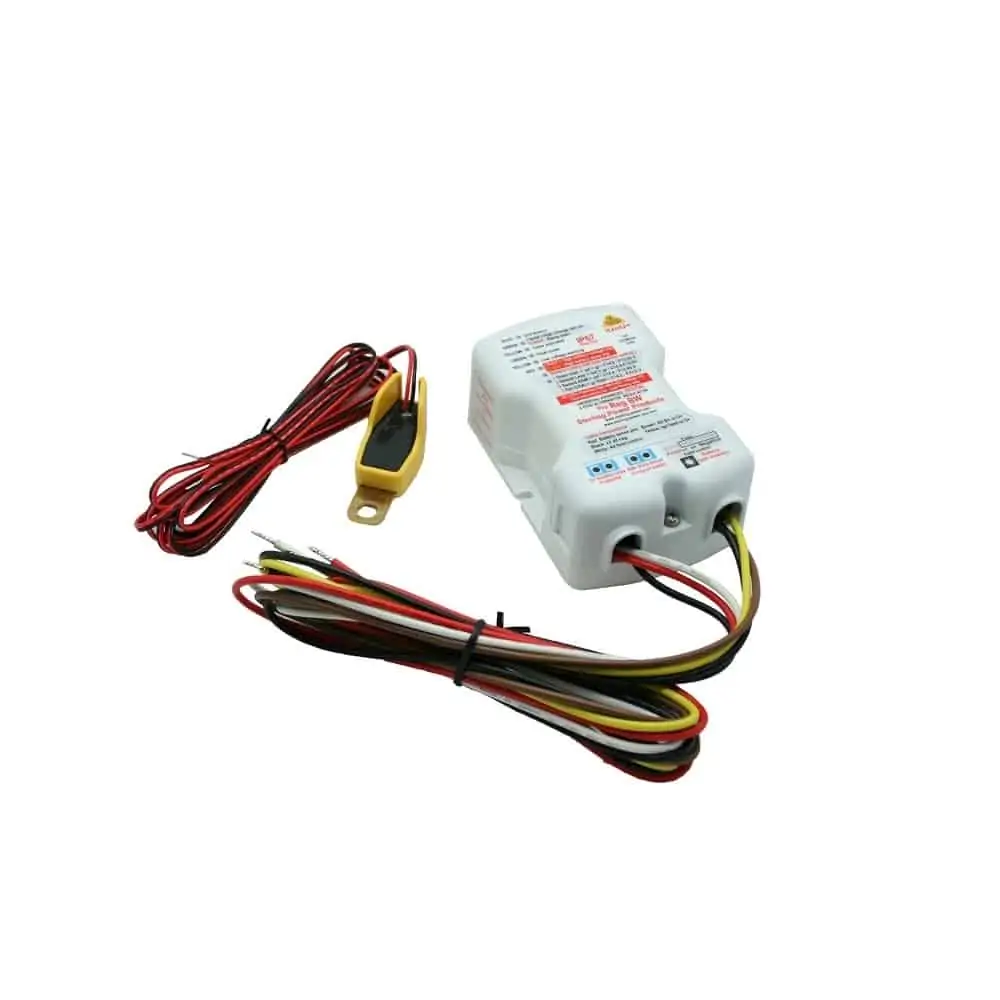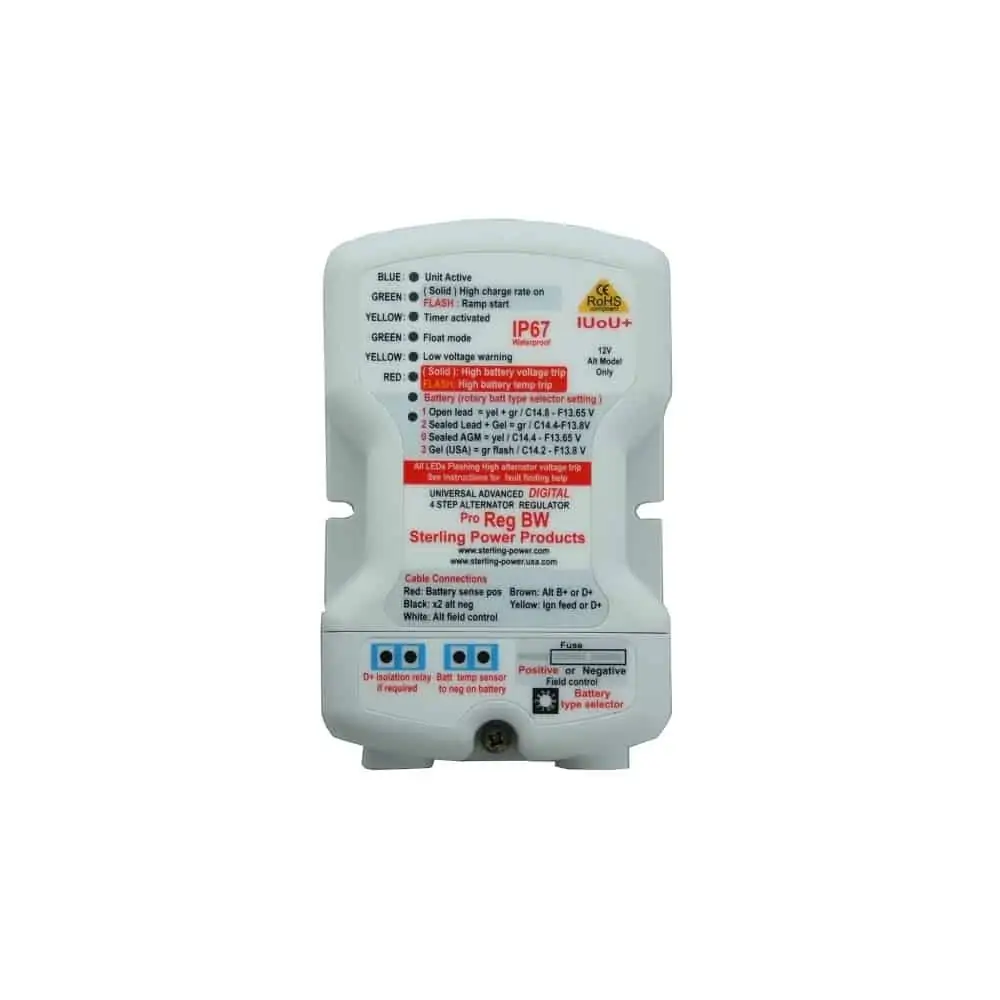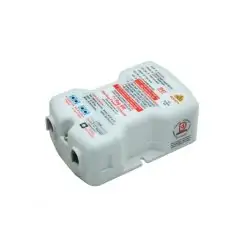Sterling Universal Advanced Digital Regulator Pro
£144.00 £119.95
2 in stock
Pro Reg BW waterproof advanced alternator regulator
This product is recommended for alternators lower than 150A rating.
Specifications
- Voltage: 12 DC
- Size (L x W x D): 120 x 80 x 45mm
- Weight: 0.4kg
Includes battery temperature sensor and 1m cables.
Ratings
- Unit actual rating (the actual device rating): Positive field control 8A maximum field current, Negative field control 13A maximum field.
- Real world rating (rule of thumb): 12V alternator with standard regulator fitted, up to approx 350A alternator, more if negative field control. 12V alternator with no standard regulator, stand alone, about 150A more if a negative field control.
Features
Digital software control with slow start
Digital control (software) uses lines of computer code, digitally burned into a memory processor in the Advanced Regulator. This means that very complex information and mathematical algorithms can be processed that would not be possible with an analogue hardware system. The unit ramps up the current over a short period of time to reduce the chance of alternator belt slip.
Dynamic progressive battery charging
This is a term used to explain that the internal software calculates a different charging regime every time it is used as the battery state etc. is never the same. Older systems simply used fixed trimmers which were not able to distinguish different battery types or sizes.
Can be used in parallel or a stand alone reg
This unit can be used as a stand-alone regulator as well as in parallel with the original regulator. Sterling believes that, where possible, to leave the existing regulator in place this offers the Sterling Reg a fall back safety position in the event of it failing.
Programmable for different battery types
Most other manufacturers fail to recognize the fact that the world has more than one type of battery. There are now four main groups, open lead acid/traction, sealed /gel, gel (Europe) and AGM To optimise charging for each of these battery types there are four totally different charging curves, temperature curves and safety criteria with each battery type.
Single unit fits 99% of alternators
The reason for this is very simple, if you check other makes, you can find 12-15 different models to cover what the Sterling will do with 1. The problem with this is the public must supply correct information about their alternator and batteries to ensure they receive the correct Advanced Regulator.
Charges to 4 step constant current progressive charging curves
All good battery chargers are constant current with 3 – 4 step charging curves. This method is recognized as the best charging type so why expect anything less from your alternator- in most cases the primary battery charging source. The Sterling Advanced Regulator converts your basic constant voltage alternator into a modern 4 step constant current battery charger, it’s that simple.
Self diagnosing fault findings
The performance and benefits of an Advanced Regulator are beyond dispute, however, an Advanced Regulator which has been incorrectly installed or fails, can have devastating effects on a boat. It will destroy the batteries and could easily set fire to cables.
Sterling takes all this into account and recognizes that some boats on which these regulators are used have poor wiring and other faults. Because of this we scan the system every two seconds and if all the parameters are not within our pre-set values then the unit will switch ‘off’ and signal a fault. This, in my opinion, is the most important aspect of this type of device, a point not shared by our competitors.
Totally isolates the regulator in a fault condition
This is very important and not fully understood by the public. All regulators can fail for different reasons. If an Advanced Regulator fails closed then the alternator will work at full power and destroy everything around itself. Simply turning the regulator ‘off’ will have no effect, so in the event of a Sterling system failing or tripping, for whatever reason, Sterling physically break the field wire guaranteeing that the Advanced Regulator will stop working.
Information 8 LED display
Most Advanced Regulators have no real information being transmitted to the operator and as a result one has no idea what is going on. Depending on the model we give the operator as much information as possible as to what is happening with the product and the installation system in general.
Battery temperature sensing
One battery temperature sensor is supplied with the unit. This will adjust the output charging curves with the ambient battery temperature.
High battery temperature trip
Most Advanced Regulators monitor the battery temperature to perform the task as explained above, but what is the point of monitoring the temperature if in the event of a battery going over temperature you do nothing about it? Sterling software will pick up the high temperature and in the worst case of a battery exceeding 50 deg C, will switch ‘off’ the regulator and display a warning.
High battery voltage trip
In the event of the battery voltage going too high the unit will switch the regulator ‘off’ and display a warning.
High alternator voltage trip
This is the most common trip used. In the event of poor wiring, incorrect installation, or any fault in the system, the alternator voltage will rise too high; the unit will trip out and display a warning.
De-sulphation ability on open lead acid batteries
In order to prevent and even de-sulphate lead acid batteries a regular charge cycle exceeding 14.4V ( x 2 for 24V ) will remove the sulphate from a battery bank and so prolong its life expectancy.
In event of failure auto return to standard regulator
There are many good reasons to leave the standard regulator in place, one of them being that, in the event of a Sterling failure or any trip condition of the advanced regulator, your standard regulator will automatically take over and allow the journey to continue but at a lower charge rate. If your Advanced Regulators does not offer this feature then you will lose the use of the boat during any failure.
Can be used with or without temperature sensing
Some people don’t want to fit temperature sensors, the choice is yours, the software will pick up if you use it or not and control accordingly. Most other makes insist a temperature sensor be fitted.
Protects batteries if temperature sensor open circuited
A big problem with temperature sensors (why people don’t like fitting them) is that they are on a battery. If someone changes the batteries and breaks or open circuits the temperature sensor wire, most Advanced Regulators will destroy your batteries by over charging them. Not so with a Sterling. In the event of a failure of a cable break the Sterling software will pick it up within 2 seconds and return to the default settings and carry on safely. It will also protect batteries if split charge relay / diode fails open circuit.
A common fault when fitting an Advanced Regulator is the old split charge diode or relay that is not up to handling the new performance, resulting in a regulator to fail. This will result in the destruction of the other battery bank, as the battery sense wire will be isolated from the alternator (but not with a Sterling, again our software jumps in and saves the day).
Protects batteries if advanced regula














